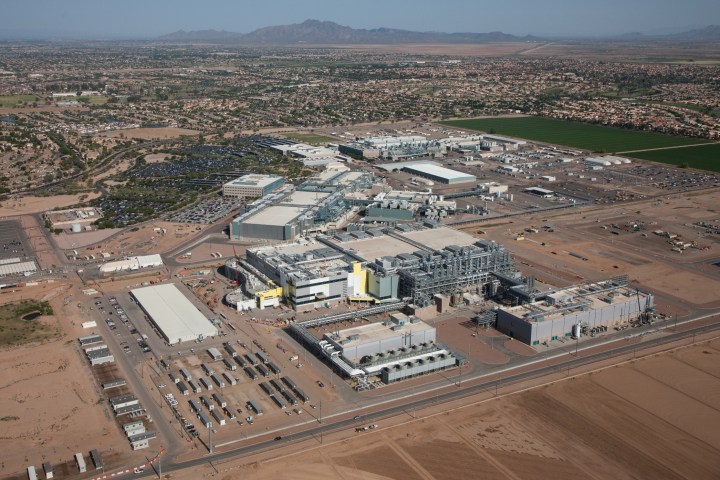
CEO Brian Krzanich made the announcement on Wednesday alongside President Donald Trump in the Oval Office. The existing plant, named Fab 42, will take three to four years to complete, and will be “the most advanced semiconductor factory in the world,” according to Intel. It will be the company’s third factory in Arizona, and will employ up to 3,000 people.
If those construction goals go according to plan, Fab 42 will be the location where Intel builds and develops its highly anticipated 7nm chips, which Intel has called the “most advanced semiconductor process technology used in the world.”
Intel is in a race to maintain its position as a market leader for processors. Ryzen, the new processors from AMD, one of Intel’s chief competitors, is hot on the chipmaker’s heels, according to recent leaks. This fiercer competition will force Intel, as well as Nvidia, to react by improving the performance of their chips or even cutting costs. Just this week, reports surfaced that Intel will be rolling out updates for its Kaby Lake processors, as well as reducing costs in response to Ryzen.
The eventual construction of this new production facility is poised to make an impact even further into the future. It will be a vital move for Intel if it hopes to get a leg up on competition by getting a 7nm processor to market as soon as possible.
“Intel’s business continues to grow, and investment in manufacturing capacity and [research and development] ensures that the pace of Moore’s law continues to march on, fueling technology innovations the world loves and depends on,” Krzanich said in a press release.
Speculation regarding the announcement in conjunction with Trump had been simmering for a few weeks. Krzanich said announcing the deal at the White House was a sign of support for the “tax and regulatory policies that we see the administration pushing forward.”
Reuters reports that discussions in the Oval Office focused solely on the plant — the fact that Intel had joined a legal case against Trump’s travel ban did not come up.
“America has a unique combination of talent, a vibrant business environment, and access to global markets, which has enabled U.S. companies like Intel to foster economic growth and innovation,” Krzanich added. “Our factories support jobs — high-wage, high-tech manufacturing jobs that are the economic engines of the states where they are located.”


